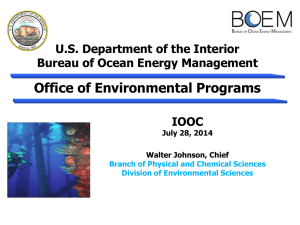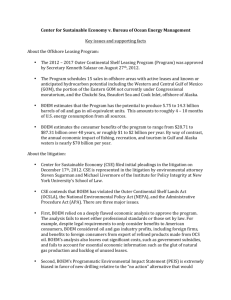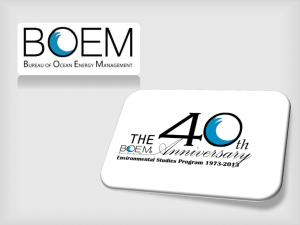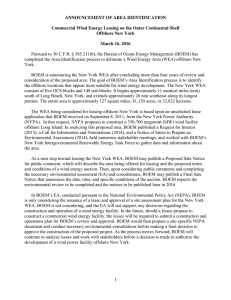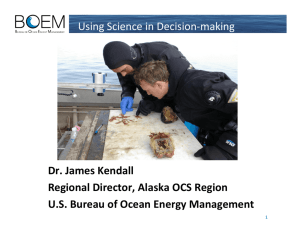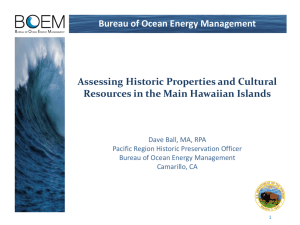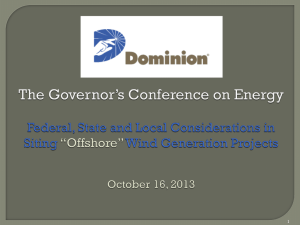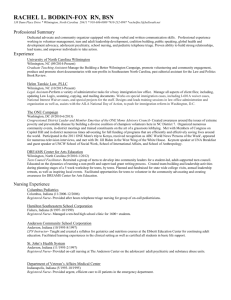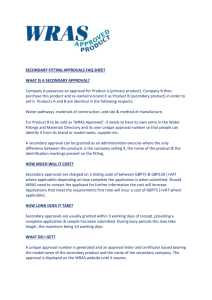HERE - Bald Head Association
advertisement
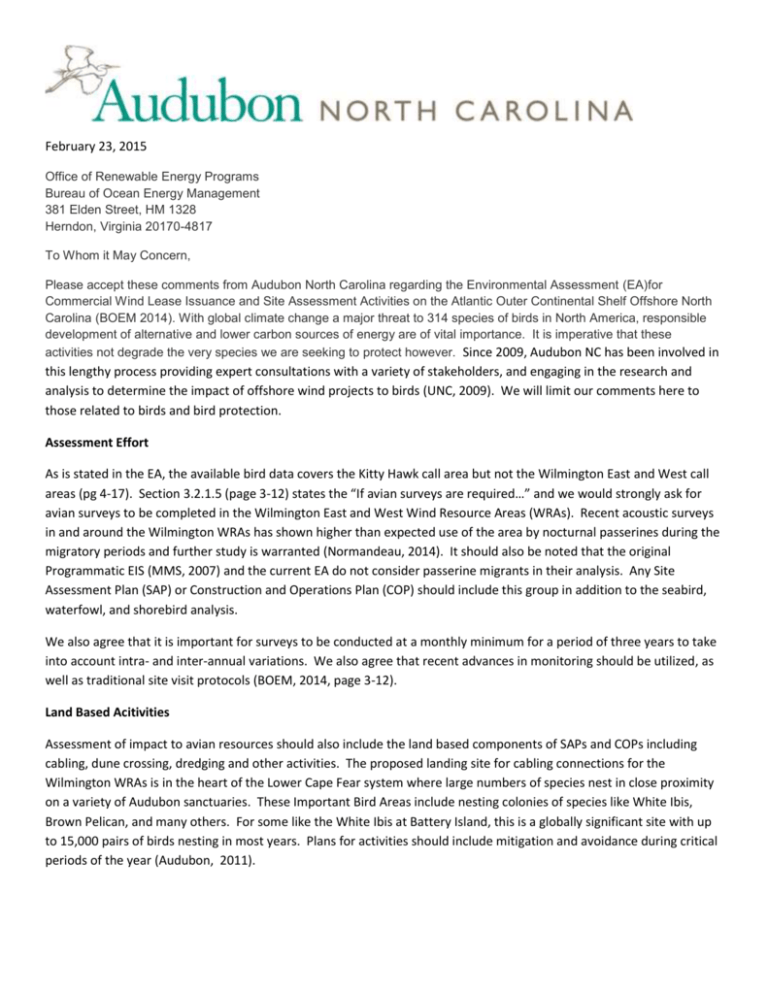
February 23, 2015 Office of Renewable Energy Programs Bureau of Ocean Energy Management 381 Elden Street, HM 1328 Herndon, Virginia 20170-4817 To Whom it May Concern, Please accept these comments from Audubon North Carolina regarding the Environmental Assessment (EA)for Commercial Wind Lease Issuance and Site Assessment Activities on the Atlantic Outer Continental Shelf Offshore North Carolina (BOEM 2014). With global climate change a major threat to 314 species of birds in North America, responsible development of alternative and lower carbon sources of energy are of vital importance. It is imperative that these activities not degrade the very species we are seeking to protect however. Since 2009, Audubon NC has been involved in this lengthy process providing expert consultations with a variety of stakeholders, and engaging in the research and analysis to determine the impact of offshore wind projects to birds (UNC, 2009). We will limit our comments here to those related to birds and bird protection. Assessment Effort As is stated in the EA, the available bird data covers the Kitty Hawk call area but not the Wilmington East and West call areas (pg 4-17). Section 3.2.1.5 (page 3-12) states the “If avian surveys are required…” and we would strongly ask for avian surveys to be completed in the Wilmington East and West Wind Resource Areas (WRAs). Recent acoustic surveys in and around the Wilmington WRAs has shown higher than expected use of the area by nocturnal passerines during the migratory periods and further study is warranted (Normandeau, 2014). It should also be noted that the original Programmatic EIS (MMS, 2007) and the current EA do not consider passerine migrants in their analysis. Any Site Assessment Plan (SAP) or Construction and Operations Plan (COP) should include this group in addition to the seabird, waterfowl, and shorebird analysis. We also agree that it is important for surveys to be conducted at a monthly minimum for a period of three years to take into account intra- and inter-annual variations. We also agree that recent advances in monitoring should be utilized, as well as traditional site visit protocols (BOEM, 2014, page 3-12). Land Based Acitivities Assessment of impact to avian resources should also include the land based components of SAPs and COPs including cabling, dune crossing, dredging and other activities. The proposed landing site for cabling connections for the Wilmington WRAs is in the heart of the Lower Cape Fear system where large numbers of species nest in close proximity on a variety of Audubon sanctuaries. These Important Bird Areas include nesting colonies of species like White Ibis, Brown Pelican, and many others. For some like the White Ibis at Battery Island, this is a globally significant site with up to 15,000 pairs of birds nesting in most years. Plans for activities should include mitigation and avoidance during critical periods of the year (Audubon, 2011). Wind Resource Area Delineation We are pleased to see the reduction in WRAs after initial public and agency comment and support the decision to not allow development within 10 nm of the Wilmington shoreline (BOEM, 2014, p. 1-6). The areas along our coast within that zone support vast numbers of wintering seabirds and migrant waterfowl. Public Comment Opportunities The EA states (page 1-2) that “Should a particular area be leased, and should the lessee subsequently submit a SAP, BOEM would then determine whether this environmental assessment (EA) adequately considers the environmental consequences of the activities proposed in the lessee’s SAP. If BOEM determines that the analysis in this EA adequately considers these consequences, then no further National Environmental Policy Act (NEPA) analysis would be required before the SAP is approved. If, on the other hand, BOEM determines that the analysis in the EA is inadequate for that purpose, BOEM would prepare an additional NEPA analysis before approving the SAP. “ “If and when a lessee is prepared to propose wind energy generation on its lease, it will submit a COP. If a COP is submitted, BOEM would prepare a project-specific NEPA analysis. This would most likely take the form of an environmental impact statement (EIS) and would provide additional opportunities for public involvement pursuant to NEPA and the Council on Environmental Quality (CEQ) regulations at 40 CFR Parts 1500–1508.” It appears therefore that public comment to SAPs will be limited and at the discretion of BOEM, and further public comment will be limited to those related to specific project EIS activity (if required). We encourage BOEM to look for ways for increased public input in the process including public comment on SAPs. This is especially important given our lack of knowledge of the Wilmington East and West WRAs and being able to provide input and comment regarding methods and survey effort and design would be helpful and increase efficiency. Thank you for the opportunity to comment on this important process. If we can be of any further assistance or to clarify anything contained within these comments, please do not hesitate to contact us at the address below. Sincerely, Heather Hahn Executive Director 400 Silver Cedar Court Suite 240 Chapel Hill, NC 27514 919-929-3899 hhanhn@audubon.org Curtis Smalling Director of Land Bird Conservation 667 George Moretz Lane Boone, NC 28607 828-265-0198 csmalling@audubon.org References Audubon North Carolina. 2011. Important Bird Areas of North Carolina. Walker Golder and Curtis Smalling, compilers. Chapel Hill, NC. Normandeau Associates, Inc. 2014. Acoustic Monitoring of Temporal and Spatial Abundance of Birds Near Outer Continental Shelf Structures: Synthesis Report. U.S. Dept. of the Interior, Bureau of Ocean Energy Management, Herndon, VA. BOEM 2014-004. 172 pp. University of North Carolina (UNC). 2009. Coastal Wind Energy for North Carolina’s Future: A Study of the Feasibility of Wind Turbines in the Pamlico and Albemarle Sounds and in Ocean Waters Off the North Carolina Coast. Available: http://www.climate.unc.edu/Portals/Climate/Coastal%20Wind- %20Energy%20for%20NC2019s%20Future.pdf . U.S. Department of the Interior, Minerals Management Service (MMS). 2007. Final Programmatic Environmental Impact Statement (PEIS) for Alternative Energy Development and Production and Alternate Use of Facilities on the Outer Continental Shelf. Final Environmental Impact Statement. October. OCS Report MMS 2007-024. U.S. Department of the Interior, Bureau of Ocean Energy Management (BOEM). 2014. Commercial Wind Lease Issuance and Site Assessment Activities on the Atlantic Outer Continental Shelf Offshore North Carolina, South Carolina, and Georgia Biological Assessment. February.
